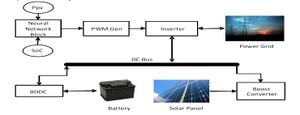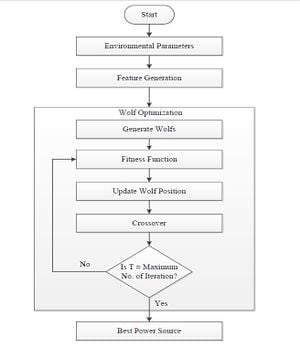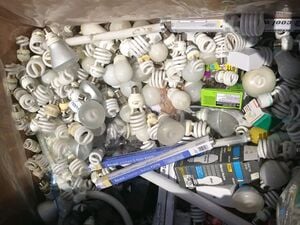
Academic and Background[edit | edit source]
Shafquat Rana is a PhD student in Electrical and Computer Department in Western University, London, Ontario, Canada. Her research as a graduate research assistant at Free Appropriate Sustainable (FAST) group lab at University of Western Ontario focuses on Solar Photovoltaics, Heat pumps, Thermal Battery. She has completed her M. Tech in Electrical Engineering at Jamia Millia Islamia, New Delhi, India; with a major in Electrical Power System and Management with background in Renewable Energy, optimization with a score of 9.6 SGPA. She has completed her B.Tech in Power Engineering with specialization in Electrical Engineering from National Power Training Institute, New Delhi, India; where for her performance and project work, she has been awarded the Essar Power Gold Medal, sponsored by Essar Power Ltd., and the University Topper Gold Model for Power Engineering batch 2019.
Her passion lies in using renewable energy resources with mechanical forces to reach net zero energy for residential buildings that have a positive impact on environment and people's life. As a driven professional, she is constantly seeking new challenges and opportunities to develop her skills and making meaningful contributions to the field of energy.
Research Interests[edit | edit source]
- Solar Photovoltaics
- Electrical Power System
- Optimization and Control
- Thermal Battery
- Heat pumps
Projects[edit | edit source]
A Novel Control Strategy Based on Neural Networks for Improving Microgrid Operation[edit | edit source]
Microgrids based on solar PV and battery storage (BESS) are extensively employed for residential and commercial purposes. Single phase inverter is utilized to connect the microgrid to the main power grid. Any microgrid's energy flow control strategy is critical for maximizing the utilization of energy storage technologies and renewable energy sources. The electricity flow control involving the microgrid and the utility grid is determined by the modes of operation of single-phase grid-linked inverters. Therefore, in this project, a Neural Network control based single phase grid linked inverter is proposed. The control technique used is based on a function-fitting Neural Network to provide an efficient power transfer between the microgrid and the main power grid. The bidirectional converter is used for controlling the discharging and charging operations of the battery. Microgrid voltage regulation is accomplished by single-phase inverters during grid integration mode and boost converters during isolation mode. The proposed methodology efficiently manages the power transfer between the main grid and microgrid as well as the voltage regulation of the DC bus.

Energy Management of Grid Connected Renewable Energy Sources based Microgrid using Grey Wolf Optimization[edit | edit source]
As electricity demands grow, the current grid structure becomes unbalanced, resulting in a variety of issues such as load shedding and unbalanced voltage, all of which have an impact on end users. To escape such scenarios, the major alternative now is to satisfy demand through generation. However, the globe is already running out of conventional energy sources, so producing additional power isn't a viable option. The power industry has adopted microgrids as well as smart grids, which may make electric power systems more reliable and efficient by the use of information and communication technology. Renewable technology enhances the available energy resources. This knowledge additionally empowers the coordination of larger amounts of sustainable power sources and traditional energy sources. The inexhaustible sources are not dispatchable, the power yield is difficult to be controlled. The way the issues of sustainable power sources are tackled in the coming decades will have a significant impact on future energy management. In light of these facts, work has focused on constructing a microgrid for renewable energy management utilizing a genetic algorithm. The proposed study would use a grey wolf-based optimization method to learn in two steps. This evolutionary algorithm assigns the appropriate set of solar or windmill generators, or biomass generators, to meet a specific load requirement. In this study, an appropriate fitness function is applied, with the distance of the source plant being taken into account for power generation loss and reduction. The experiment was carried out on a real data set and the results reveal that the suggested work outperforms earlier approaches in terms of various performance parameters.


Automatic Power Factor Detection and Correction[edit | edit source]
Automatic Power Factor Detection and Correction for Inductive Loads, with the goal of lowering residential power expenditures. This APFC system used capacitors to compensate for the reactive power drawn by inductive loads, improving the power factor and reducing energy consumption. The capacitors are connected to the load through a power factor controller, which monitors the load and switches the capacitors on or off as needed to maintain the desired power factor. The APFC system was designed to operate automatically using Arduino. This was an experimental project done to adjust the capacitors to maintain the desired power factor with the help of Arduino.
Prajwal (Light)[edit | edit source]
E-waste is one of the major problems the world is facing these days. It is not only responsible for environmental problems but also has an indirect effect on our health and a direct impact on our food resources. Environment conservation has always been a priority at Enactus NPTI. This is what this project focuses on i.e., dealing with fused CFLs, which not only helps in recycling E-waste but also makes it sustainable for a long time and cost 77% less than normal CFL bulbs, thus giving its contribution in saving money as well as the environment. It is part of an entrepreneurial project having the perspective to see an opportunity and the talent to create value from that opportunity representing Enactus NPTI at the national level. The project also aimed to help people teach them to make LEDs with cheap materials.

